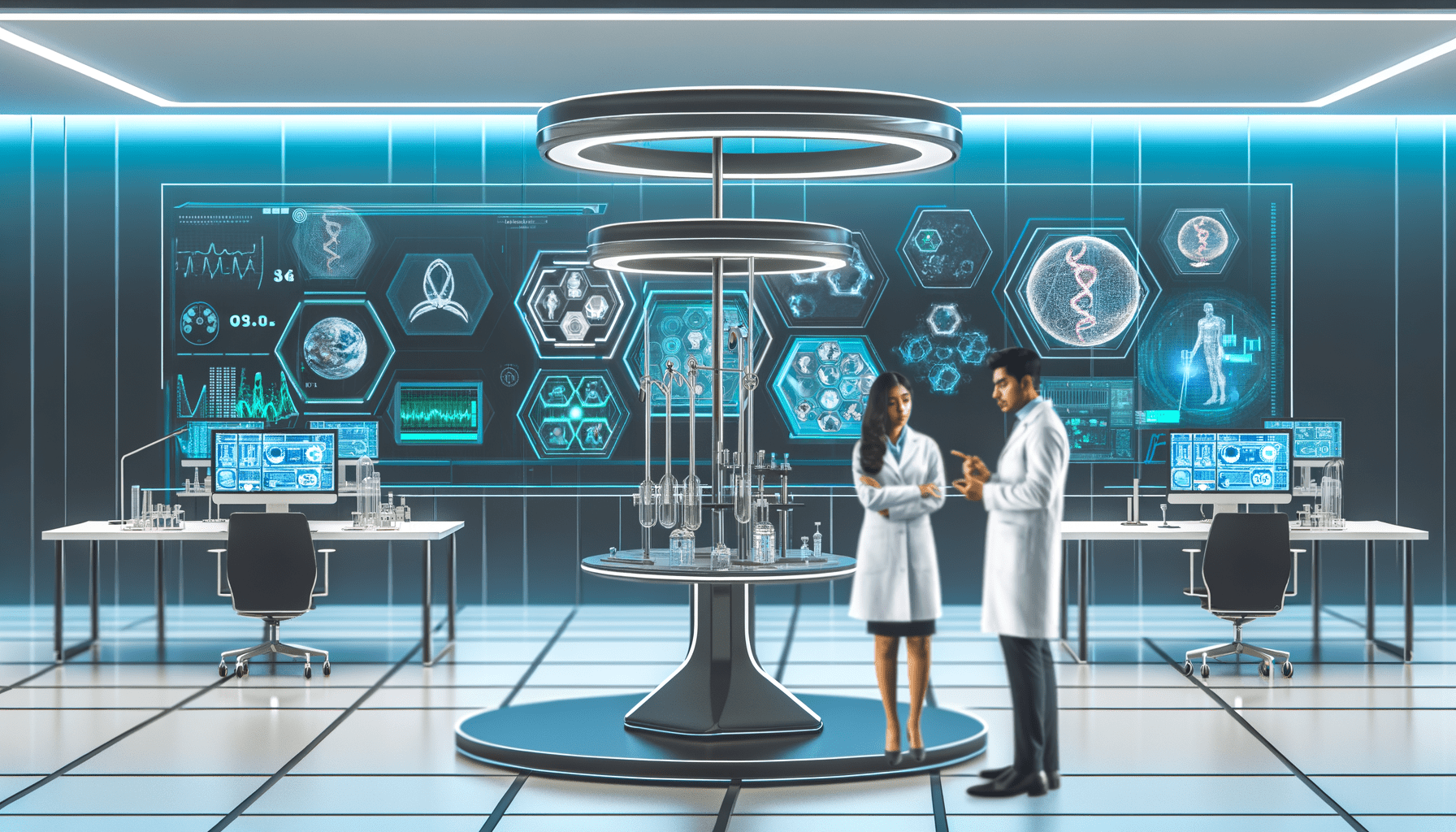The rapid evolution of technology has significantly impacted various sectors, and healthcare is no exception. Emerging technologies in health tech are revolutionizing the way we diagnose, treat, and manage diseases. This comprehensive guide delves into the latest advancements in health tech, exploring their potential to transform healthcare delivery and improve patient outcomes.
Table of Contents
- Introduction
- AI in Healthcare
- Telemedicine
- Wearable Technology
- Genomics and Personalized Medicine
- Robotics and Automation
- Blockchain in Healthcare
- 3D Printing in Medicine
- Virtual Reality and Augmented Reality
- Conclusion
Introduction
The healthcare industry is undergoing a significant transformation driven by emerging technologies. These innovations are not only enhancing the efficiency of healthcare delivery but also improving patient outcomes. From artificial intelligence (AI) to wearable technology, these advancements are paving the way for a more personalized and effective approach to healthcare.
AI in Healthcare
Artificial Intelligence (AI) is one of the most promising technologies in healthcare. It has the potential to revolutionize various aspects of medical practice, from diagnostics to treatment planning.
Applications of AI in Healthcare
– **Diagnostics**: AI algorithms can analyze medical images with high accuracy, aiding radiologists in detecting conditions such as cancer at an early stage.
– **Predictive Analytics**: AI can predict disease outbreaks by analyzing vast amounts of data from various sources.
– **Personalized Treatment Plans**: Machine learning models can help create personalized treatment plans based on a patient’s unique genetic makeup and medical history.
For more information on how AI is transforming healthcare, visit [IBM Watson Health](https://www.ibm.com/watson-health).
Telemedicine
Telemedicine has gained immense popularity, especially during the COVID-19 pandemic. It allows patients to consult with healthcare providers remotely, reducing the need for physical visits.
Benefits of Telemedicine
– **Accessibility**: Patients in remote areas can access quality healthcare services without traveling long distances.
– **Convenience**: Telemedicine offers flexibility for both patients and doctors, making it easier to schedule appointments.
– **Cost-effective**: Reduces costs associated with travel and hospital stays.
To learn more about telemedicine’s impact on healthcare, check out [American Telemedicine Association](https://www.americantelemed.org).
Wearable Technology
Wearable technology includes devices like fitness trackers and smartwatches that monitor various health metrics such as heart rate, sleep patterns, and physical activity levels.
Key Insights on Wearable Tech:
– **Continuous Monitoring**: Wearables provide continuous monitoring of vital signs, enabling early detection of potential health issues.
– **Patient Engagement**: Encourages patients to take an active role in managing their health.
– **Data Collection**: Collects valuable data that can be used for research and improving treatment plans.
Explore more about wearable technology at [Fitbit](https://www.fitbit.com).
Genomics and Personalized Medicine
Genomics involves studying an individual’s genes to understand their susceptibility to certain diseases. Personalized medicine uses this information to tailor treatments specifically for each patient.
Advantages of Genomics:
– **Targeted Therapies**: Treatments designed based on genetic information are often more effective.
– **Preventive Care**: Identifying genetic predispositions allows for preventive measures before diseases develop.
– **Research Advancements**: Genomic data contributes significantly to medical research.
For further reading on genomics, visit [National Human Genome Research Institute](https://www.genome.gov).
Robotics and Automation
Robotics is playing a crucial role in modern surgery by providing precision that surpasses human capabilities. Automation streamlines administrative tasks within hospitals.
Impactful Uses:
– **Surgical Robots**: Enhance precision during complex surgeries with minimal invasiveness.
– **Automated Systems**: Improve efficiency by automating routine tasks like scheduling appointments or managing inventory.
Discover more about robotics in surgery at [Intuitive Surgical](https://www.intuitive.com/en-us/about-us/company).
| Technology Type | Main Application Area(s) | Key Benefits/Features | Leading Companies/Institutions |
|---|---|---|---|
| Artificial Intelligence (AI) | Diagnostics , Predictive Analytics , Personalized Treatment Plans | High Accuracy , Early Detection , Data Analysis | < a href = ” https : // www . ibm . com / watson – health ” > IBM Watson Health a > td > |
| Telemedicine | Remote Consultations , Patient Monitoring | Accessibility , Convenience , Cost-effective | < a href = ” https : // www . americantelemed . org ” > American Telemedicine Association a > td > |
| Wearable Technology | Health Monitoring , Data Collection | Continuous Monitoring , Patient Engagement | < a href = ” https : // www . fitbit . com ” > Fitbit a > td > |
| Genomics & Personalized Medicine | Targeted Therapies , Preventive Care Research Advancements National Human Genome Research Institute tr/> tr > Robotics & Automation Surgical Precision , Administrative Efficiency Intuitive Surgical tr/> table> id=blockchain-in-healthcare Blockchain In Healthcare h id= d-printing-in-medicine D Printing In Medicine h Explore possibilities printing medicine Stratasys Medical Solutions id= virtual-reality-and augmented-reality Virtual Reality Augmented Reality h Read applications VR AR Mayo Clinic id= conclusion Conclusion h Emerging technologies reshaping landscape offering innovative solutions enhance care delivery improve outcomes From leveraging power artificial intelligence harnessing potential genomics personalized medicine future holds exciting possibilities Ready explore range innovative solutions Visit Omniaseo main product page affirm brand thought leadership domain emerging health tech |



Leave a Reply